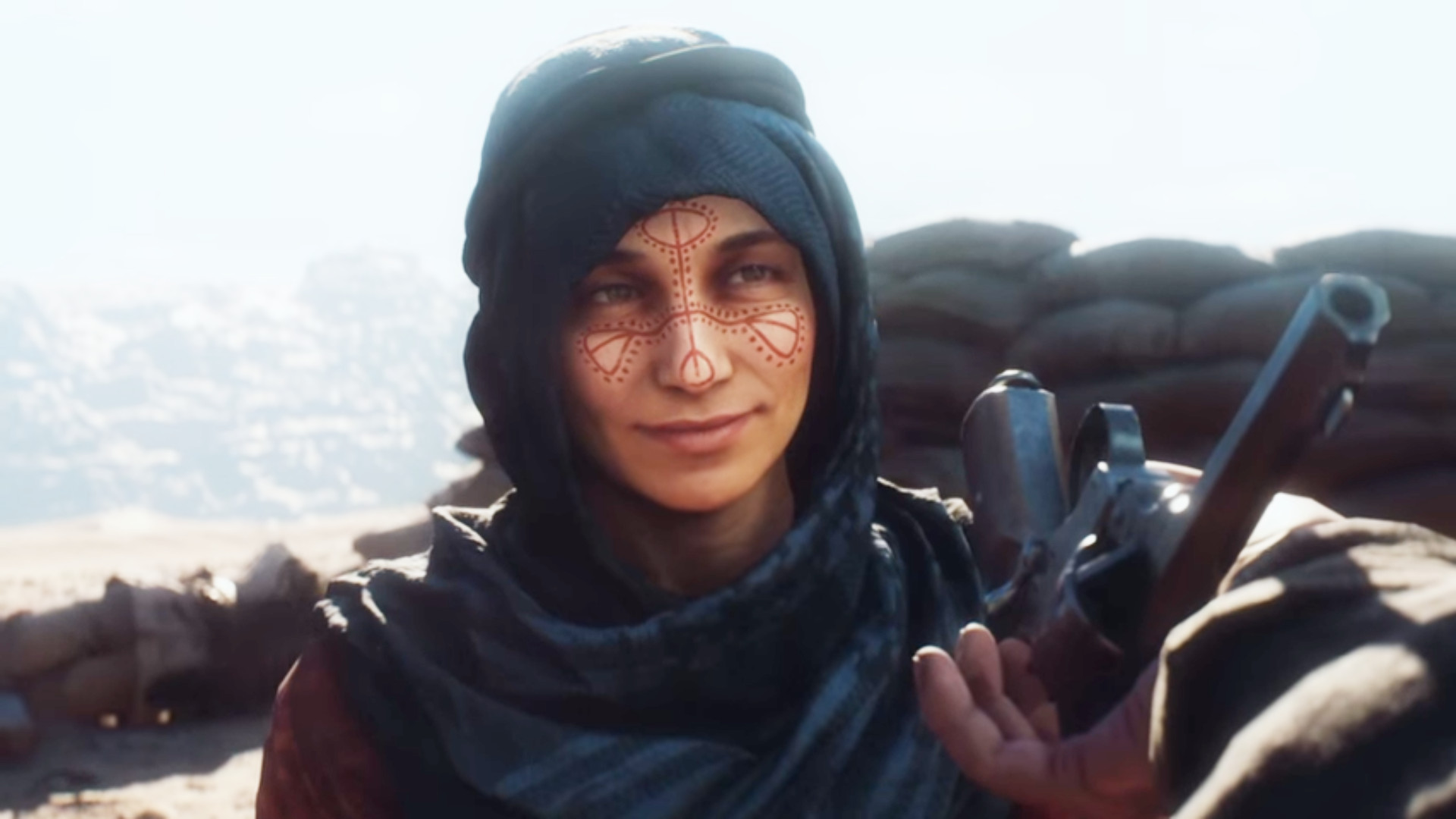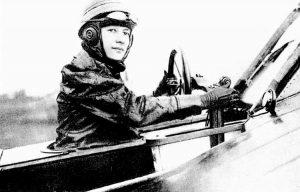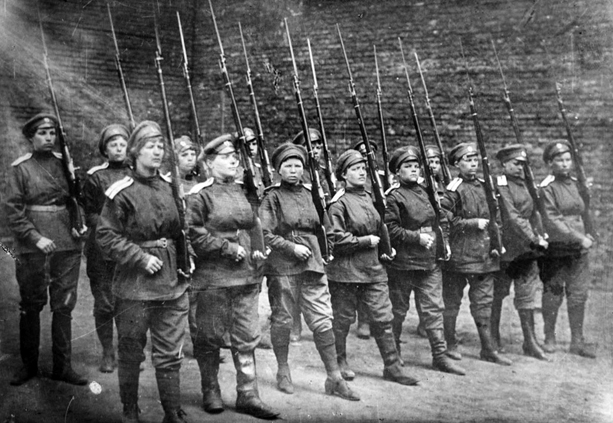Rumors that the next Battlefield would take place in World War I swirled for months. When Battlefield 1 debuted in May 2016, blood-soaked trenches, daring air battles, and terrible music confirmed the new setting. While the internet collectively cheered, many were wondering about the implications of the first AAA first person shooter set during the Great War.
There have been World War I games in the past, everything from strategy games to arcade fliers staring everyone’s favorite Peanuts character, Snoopy. But Battlefield 1 would be the first big budget, mainstream World War I game of the modern era, and it was coming from a developer with a troubled history.
Battlefield 3 and 4 met with mixed reviews, largely due to online instability issues and terrible single player campaigns. Battlefield Hardline came out during a time of unrest in the United States over the police killings of Michael Brown, Tamir Rice, Eric Garner and countless other men and women of color. All of this resulted in – or at least, should have resulted in – Battlefield 1’s announcement being met with skepticism. Thanks to the unfavorable debut of Call of Duty: Infinite Warfare, the reception of DICE’s online first person shooter saw gleeful declarations that it had won some kind of entertainment war.
Real Realism
Thanks to this, the questions about historical authentic or accuracy got lost in the shuffle. These questions were un-asked, ignored whenever they were. Nobody cared that all public footage for the game, and the open online beta, featured gameplay that was more or less a painted over World War II game. High octane battles with men wielding heavy machine guns and wiping out hundreds on horseback.
But there have been bright spots. The single player campaign will focus on several characters throughout the war, including an African-American soldier fighting in Europe and an Arab woman aiding the infamous Lawrence of Arabia. These aren’t the kind of soldiers many associate with The First World War, whether or not they associate anything with the war.
You wouldn’t know either of these characters were in the game if you only played the multiplayer though, a mode awash with the more “standard” idea of what soldiers in World War I looked like: white men.
There has been a greater push in recent years to get more representation in online shooters, particularly in Call of Duty and Battlefield. While both have complied with this demand in recent years, EA and DICE have regressed to the old boys club for the latest Battlefield installment. “Old boys club” here referring to the sterotyped angry, racist twelve year old kids online that may or may not represent the bulk of online players.
A Missed Opportunity
Thanks to former DICE developer Amandine Coget, we know female soldiers were going to appear in the online portion of Battlefield 1. After leaving DICE, she took to Twitter to vent her frustration about the removal of these characters from the online aspect of the game. She says the original design document said “screw realism, we’re adding female soldiers, because we’re way overdue.”
As Coget describes it, DICE executives called her into a meeting and told her that they were “going for realism after all,” that “Female chars matter,” yet “it’s just not the game we’re making.” As you would imagine, Coget explains she had to force the reason for the change out of the execs, who eventually told her what she already expected. “All that is believable but female soldiers are not, to the core audience of boys.”
The “all that” she’s referring to are the tanks that go impossibly fast compared to real tanks of the time, the abundance of handheld automatic weapons, the soldiers in full metal body armor resembling Medieval knights, and a host of other liberties rife for castigating. Corget herself, and likely many others, are wrong in one regard. The “screw realism, we’re adding female soldiers anyway” mentality need not exist. Female soldiers were as much a part of World War I as any modern conflict.
Were there as many female soldiers as men on the average battlefield? No, but there were more than just a handful of women serving as nurses. Women were fulfilling numerous roles throughout the war, from those front line nurses to spies, and even soldiers. Here’s a look at just a few of World War I’s women warriors.
Edith Cavell
(1865 – 1915)
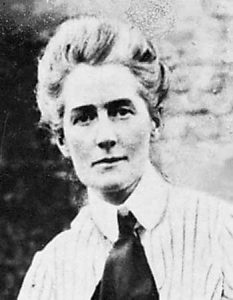 One of the most well-known women of The Great War was Edith Cavell. A British nurse living in Brussels, Cavell was visiting a friend in England when the war broke out. She returned to her nursing school and clinic in Belgium, which Germany invaded in August 1914.
One of the most well-known women of The Great War was Edith Cavell. A British nurse living in Brussels, Cavell was visiting a friend in England when the war broke out. She returned to her nursing school and clinic in Belgium, which Germany invaded in August 1914.
She used her clinic as a hospital for wounded Belgian, French and British soldiers. At this point of the war, the familiar trenches weren’t yet utilized. The war as mobile as the Second World War. Without this defensive advantage, the Belgian army was overrun in matter of months, taking heavy casualties and leaving most of Belgium occupied by Germany. Cavell hid the soldiers while they recovered, and helped them escape to the neutral Netherlands after they recovered.
After a year of aiding soldiers and partisans, the Germans discovered what Cavell was doing and arrested her. She was charged with aiding enemy forces escape to a neutral nation, and also spying for the Entente. The German’s claimed she was passing military intelligence on to the soldiers and other nurses, who then passed the information on once they got back to Britain and France.
She refused to defend herself in court. Diplomats from neutral Spain and the United States fought to have her released, yet these efforts were in vain. She was sentenced to execution – the standard penalty for any captured spies for both sides in the war. Her sentence was carried out via firing squad on October 12, 1915.
The story that Cavell was innocent of spying, and that she wanted to help her nation and allies persisted for a century. Now thanks to documents uncovered just last year (2015), we now know Cavell was operating as a spy. Thanks to the unearthed accounts of a Belgian mining engineer who first brought wounded soldiers to Cavell’s clinic, we know she had in fact established an extensive spying network. She relayed information about “German trench systems, the location of munitions dumps and the whereabouts of aircraft” to the Entente. She and her spies would write the information on strips of fabric, and sew it into the lining of clothing and shoes given to the recovered soldiers being sent to the Netherlands.
Marie Marvingt
(1875 – 1963)
Like Edith Cavell, Marie Marvingt began her career as a nurse. From the outset of the war, she was determined to join the French army. Yet she cemented her legacy even before war broke out.
Originally a world class athlete in a multitude of sports, Marvingt tried to enter the Tour de France in 1908, but was refused entry. Refusing to give up, she successfully cycled the course after the race was complete, something only 36 of the competing 114 men accomplished. She began her aviation career piloting hot air balloons, but took a liking to piloting aircraft, and studying how they worked.
In 1910, she proposed an air ambulance service using fixed wing aircraft, and drew up designs for a flying ambulance. However, the company she hired to create the first such aircraft went bankrupt, and the plane never made it into production.
When the war broke out in 1914, she disguised herself as a man and joined the French 42nd Battalion of Foot Soldiers as a front line soldier. She was discovered after three weeks and forced to return home, but was accepted – sans disguise – in the Italian army in 1915, again as a front line soldier. She eventually moved to the Air Force, when she took part in a bombing run on the German city of Metz, becoming the first woman to participate in a flying combat mission.
Flora Sandes
(1876 – 1956)
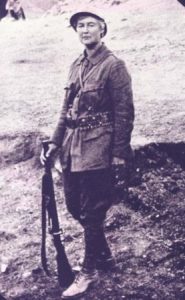 Flora Sandes is officially the only British woman to serve as a soldier in World War I, but she didn’t do so in the British army. Like many women on this list, Sandes began the war as a nurse. In August 1914, she traveled to Serbia with 37 other nurses to aid the humanitarian crisis. The Austria-Hungarian Empire invaded Serbia, and began indiscriminately killing civilians throughout the nation. She traveled to Kragujevac, which served as a base of operations for the Serbian army, and began work immediately.
Flora Sandes is officially the only British woman to serve as a soldier in World War I, but she didn’t do so in the British army. Like many women on this list, Sandes began the war as a nurse. In August 1914, she traveled to Serbia with 37 other nurses to aid the humanitarian crisis. The Austria-Hungarian Empire invaded Serbia, and began indiscriminately killing civilians throughout the nation. She traveled to Kragujevac, which served as a base of operations for the Serbian army, and began work immediately.
After the Serbian army was overrun, Sandes got separated from the rest of the nurses. As odd as it sounds, she joined the Serbian army for her own survival. Food and water were in short supply, and soldiers were guaranteed rations. The Serbian army, meanwhile, was in such disarray they were in no position to turn anyone down.
Sandes fought in the army for years, but was gravely wounded in 1916 after engaging in hand-to-hand combat when a grenade exploded near her. She survived the explosion, received a promotion to Sergeant major and even earned the highest decoration from the Serbian army, the Order of the Karađorđe’s Star. She was so revered that a lieutenant crawled through enemy gunfire to drag her back to the Serbian lines.
However, her wounds were too severe to return to combat, so she instead wrote a book of her adventures over the previous two years, and donated the profits from its sales back to the Serbian army. She even ran a hospital for wounded soldiers.
By the end of the war, Sandes achieved the rank of Captain. She stayed in the army even after the war ended, and didn’t leave until 1922.
Turkish Women Soldiers
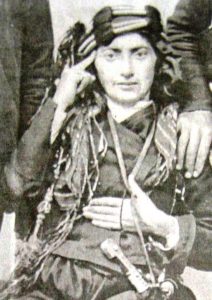 There are several Turkish women who fought in World War I. The Ottoman Empire allied themselves with Germany and the Austria-Hungarian Empire early in the war. Kara Fatma is considered a national hero today. She was a Second Lieutenant and formed her own squad of other female soldiers. Her husband died in the World War I, but she didn’t serve until the Greco-Turkish War in 1919.
There are several Turkish women who fought in World War I. The Ottoman Empire allied themselves with Germany and the Austria-Hungarian Empire early in the war. Kara Fatma is considered a national hero today. She was a Second Lieutenant and formed her own squad of other female soldiers. Her husband died in the World War I, but she didn’t serve until the Greco-Turkish War in 1919.
There were Turkish women who fought in The Great War itself however. There aren’t many records of them in Western culture, so a lot of this information had to be translated from Turkish. According to Borderlines: Genders and Identities in War and Peace edited by Billie Melman, Tayyar Rahmiye led a group of Ottoman soldiers against a French garrison and died in battle. There were also reports dating back to 1916 of a female sniper at the Battle of Gallipoli, killing countless Entente soldiers. These reports are considered to be propaganda today, however.
The difference between 2nd Lieutenant Fatma and Tayyar Rahmiye and the unknown Arab woman in Battlefield 1 is that they did not aid the Entente. That’s not to say Muslims, even from the Ottoman Empire, did not join the Entente. Lawrence of Arabia constructed the Arab Uprising, which succeeded in convincing Muslim tribes throughout the Middle East to break away from the Ottomans, and fight for independence.
Maria Bochkareva and the 1st Russian Women’s Battalion of Death
(1889 – 1920)
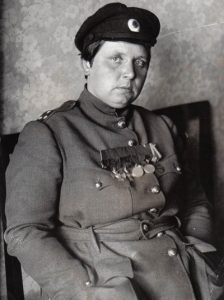 Maria Bochkareva joined the Russian army in 1914 under special permission from Tsar Nicolas II. Ridicule and sexual harassment followed her everywhere in the Russian military camps, until she proved herself in battle. The first time she saw action, her unit was almost wiped out in a bloody charge. She, and several others, retreated back to the lines, but went back into No Man’s Land and single-handedly dragged 50 wounded men back to Russian lines before getting shot in the leg.
Maria Bochkareva joined the Russian army in 1914 under special permission from Tsar Nicolas II. Ridicule and sexual harassment followed her everywhere in the Russian military camps, until she proved herself in battle. The first time she saw action, her unit was almost wiped out in a bloody charge. She, and several others, retreated back to the lines, but went back into No Man’s Land and single-handedly dragged 50 wounded men back to Russian lines before getting shot in the leg.
After years of front line service, she petitioned the government in 1917 to form multiple shock battalions composed of women. These shock battalions were akin to Special Forces; they would advance into No Man’s Land and capture as many German trenches as possible, securing a path for the main Russian army come in and hold those positions.
She was granted permission, and led her own battalion, the 1st Russian Women’s Battalion of Death. During the Kerensky Offensive in July 1917, the Russian army was order to go over the top and attack German trenches near the town of Smarhon. By this point in the war, Russian moral was at an all-time low, and it wouldn’t be long until Russia left the war.
But there at Smarhon, the 1st Russian Women’s Battalion went over the top alone. They captured three German trenches by the time the men summoned enough courage to join them. They found several cases of Vodka in the German trenches, which the men tried to drink before the women broke all the bottles.
There were several other all-female battalions, such as the 1st Petrograd, 2nd Moscow, and 3rd Kuban. Some of these battalions never saw combat, faced with sexual harassment and bitterness. These female battalions often pushed the men into combat, when at this point many men were close to mutiny.
Russia decommissioned all the Women Battalions after they surrendered to Germany. Bochkareva didn’t fight in the Russian Civil War, but still found herself caught in the middle. She was arrested by communist forces after being asked to ferry messages in the National backed White Army, but managed to get away. She then traveled to the United States, where she met President Woodrow Wilson and begged for support. The story goes that Wilson was so moved by her plea he was brought to tears and offered American support.
It was difficult choosing the women who should be on this list. Everyone who fought in the war deserve some form of recognition, but it’s impossible. We could have looked at Dorothy Lawrence, Loretta Perfectus Walsh, or any of the women who stayed behind to staff the factories that produce weapons, ammunition, and food. There are too many, both women and men, whose names will be forever lost to time. Their bodies put into mass graves, their families not knowing what became of them, only to be eventually forgotten.
EA’s Equality Failure
Battlefield 1 could have brought these women into the spotlight, to at least acknowledge the sacrifices and the bravery of the women who fought alongside men on every front. Unfortunately, some marketer somewhere deemed women warriors “too unrealistic.” There’s a playable female soldier in the single player campaign, but it seems it’s only her. How many people play any Battlefield game for the single player anyway?
However good or bad Battlefield 1 may be, and early reviews are suggesting the single player is surprisingly poignant, it will forever remain a missed opportunity. As disliked as many of EA’s policies are, they do at least claim to stand for equality. How can they, in good conscious, continue to promote equality when they consistently leave out women and people of color in their games, and even remove them after the fact? The simple answer is: they can’t.
Josh Griffiths
Latest posts by Josh Griffiths (see all)
- The War Stories Battlefield V is Missing - November 12, 2018
- Horizon Zero Dawn Shows the Problem with Game Reviews - November 7, 2017
- Call of Duty WWII’s Missed Opportunities and Future Possibilities - November 3, 2017

